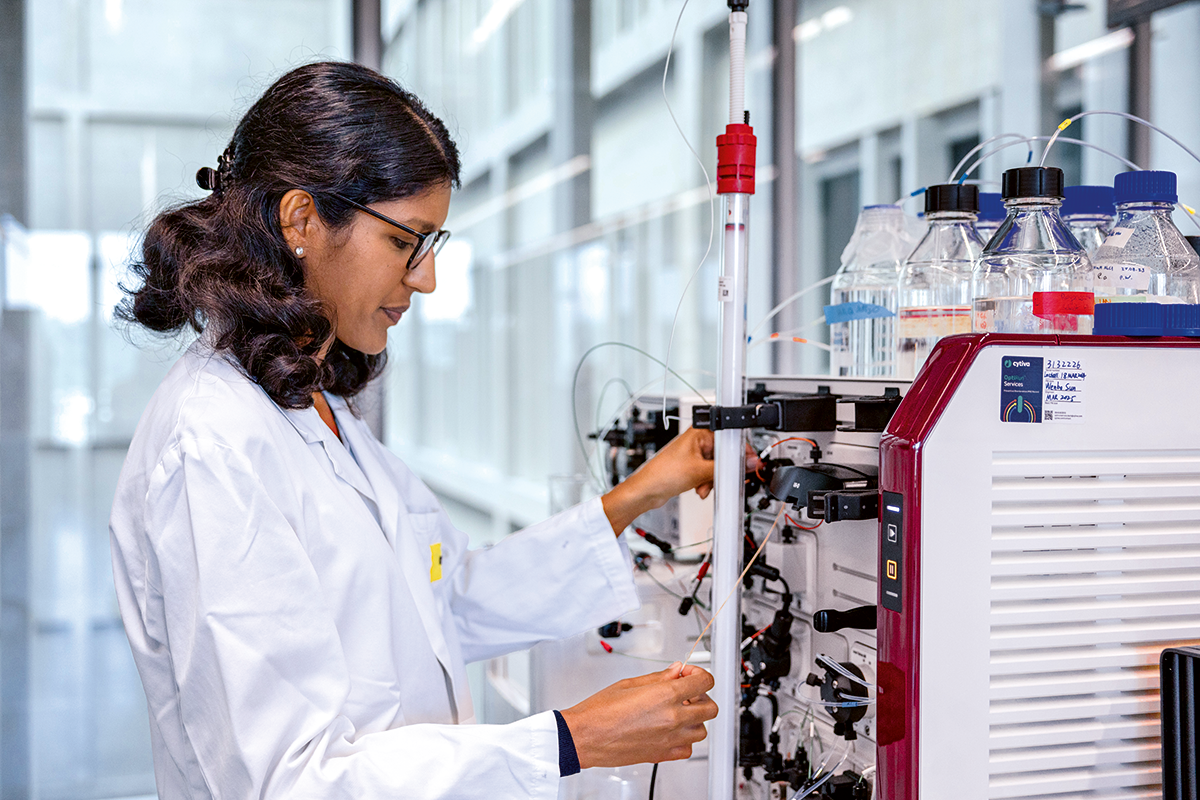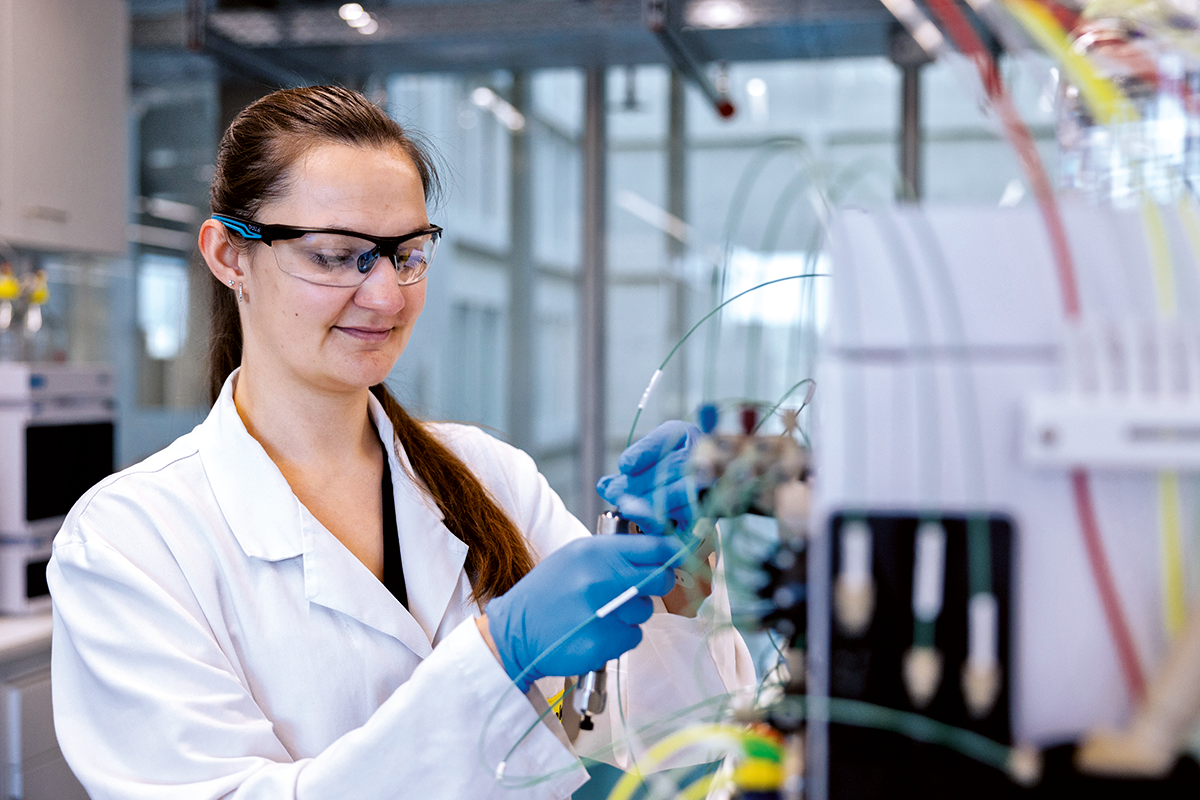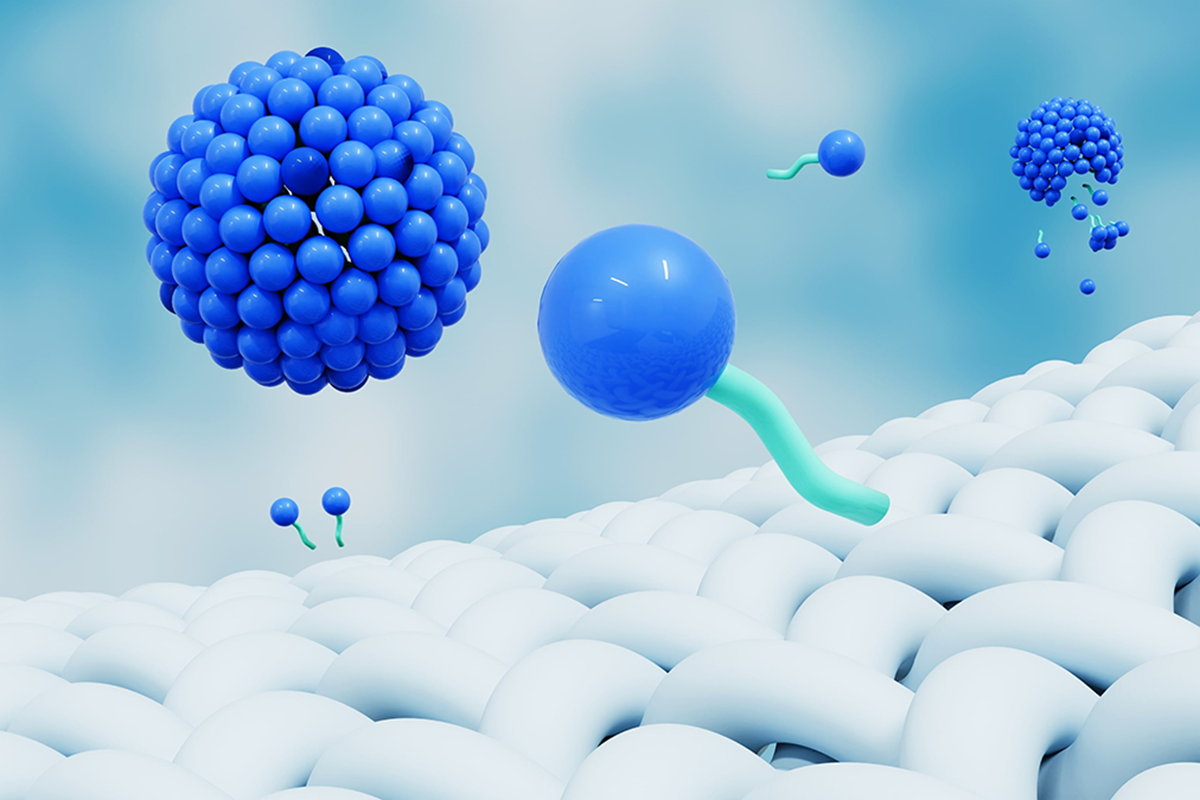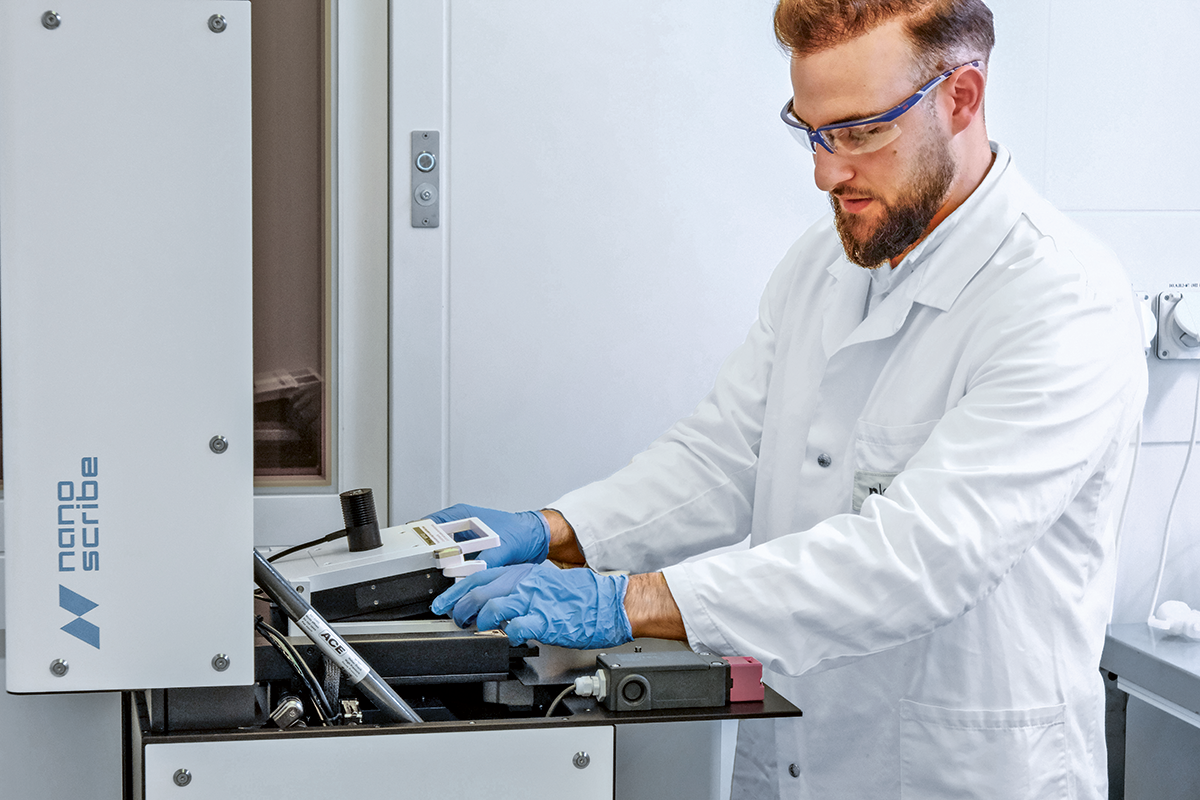Biologics – a new generation of medicines that require new solutions
Two teams at the Institute for Pharma Technology and Biotechnology are collaborating with industry to find solutions to new challenges across the entire biomanufacturing process, from cell line development to culture, purification, formulation, fill, finish and quality assurance of technical and preclinical trial material.
Biologics have established their place as a new generation of medicines that provide more targeted treatment options for cancer, autoimmune diseases, metabolic diseases and genetic disorders. Today, biologic modalities such as antibody-drug conjugates, bispecific proteins and cell and gene therapies have opened up even more avenues, yet they present unique challenges in biopharmaceutical production. Meanwhile, some established biologics are moving from clinical to home settings, where patients can administer them themselves. This creates novel considerations for biologics storage, injection and alternative delivery routes.
Cell culture
Mammalian host cell lines such as Chinese Hamster Ovary (CHO) or Human Embryonic Kidney (HEK) cells act as living factories to produce biologics. Understanding what is happening inside the bioreactor during different stages of cell culture is key to obtaining high yields.
Raman spectroscopy, including analysers, probes and software, can enable real-time analysis of nutrients, metabolites, product quality and cell viability, helping manufacturers gain control of the process and make decisions about when to feed the culture. However, its wide-scale implementation is currently limited by calibration model development, which requires labour-intensive and time-consuming experimental setups as well as complex IT infrastructure.
In an Innosuisse project called Raman Ready, researchers from the Institute for Pharma Technology and Biotechnology are developing ready-to-use calibration models for Raman spectroscopy in bioprocesses.
“By combining Raman technology with machine learning expertise, we aim to create versatile and accurate models that are applicable for a wide range of biologics and processes” says Prof. Dr. Thomas Villiger, Group Leader, Bioprocess Technology.
The project’s implementation partner, Endress + Hauser, is a leading provider of Raman systems who believes in the importance of delivering high-quality sensors to its clients.
“We are confident that the work we are doing with the FHNW will help make Raman systems more accessible to our clients and broaden the application of this powerful technology” says Lukas Jegge, Senior Sales Engineer at Endress + Hauser.
Purification of antibodies
After production, biologic modalities such as antibodies produced from a host cell need to be separated from the culture medium in which they were grown. Centrifugation, membrane filtration and protein affinity chromatography are the most common steps to capture and purify the target biologics. However, small amounts of protein impurities, known as host cell proteins (HCPs), may remain after chromatography and can cause concerns for product quality, safety and/or efficacy.
In a large-scale study conducted with Novartis, Sherin Panikulam from Villiger’s team analysed 23 biologics after affinity chromatography. The goal was to find out what types of HCPs remained and understand why they had been captured along with the biologics, to better guide process development.
Of the 449 HCPs identified, most were cap-tured along with fewer than 3 biologics. However, some HCPs remained identified in many biologics. Using protein network analysis, Panikulam showed that protein-protein interaction is an additional mechanism for HCP co-elution, resulting in failure to remove them by chromatography.
“Our findings may help to guide host cell line development, for example knockdown or knockout of the primary binding partner in the CHO cell line. We also hope that new purification strategies can be developed to prevent certain host-cell proteins from bringing their friends to the party and being captured with target biologics” says Panikulam.
“Nowadays, we need a better knowledge of residual impurities remaining in biologics. These results are key to understanding how HCPs behave during the purification process of a drug, and support process development in case a problematic HCP is spotted,” says Dr. Nicolas Lebesgue, Principal Scientist in Analytical Characterizationat Novartis.
Please choose a person or a collection.
Purification of gene therapeutics
In gene therapy, a repair DNA sequence is packaged inside a viral vector, also called a capsid, that delivers the DNA to the nucleus of a cell. Manufacturing gene therapeutics is complex and time consuming, as the traditional production process requires three plasmids, growth of host HEK cells, introduction of the three plasmids into HEK cells, production by the HEK cells of viral capsids that contain the therapeutic DNA sequence, and separation of capsids from the material used to produce them.
Not all viral vectors produced contain the therapeutic DNA. After production in HEK cells, about 50-80% of capsids are empty. Capture and polishing chromatography steps are used to obtain 80-90% full capsids and to ensure therapeutic efficacy. Purification processes for viral vectors are not as well established or standardised as those for antibodies, especially at larger scale. This is a critical bottleneck to making gene therapies more affordable and available.
In a project with YMC, a leading developer of chromatographic stationary phases and purification equipment, Julia Müller from Villiger’s lab is working on continuous purification strategies for adeno-associated viral vectors (AAVs).
“Instead of capturing AAVs on a single column and losing some during loading, we are using twin columns to transfer the flow-through from the first column to the second, giving AAVs a second chance to be captured” says Müller. Afterwards, the first column is emptied and reintegrated into the process, picking up the baton when the second column is full, and so on until everything has been purified. Continuous purification not only captures more AAVs - it also uses less material and energy than batch purification and is easier to characterise for quality assurance.
Similarly, during polishing to separate full and empty AAVs, the purest fraction of full AAVs (centre cut) is extracted from the first column, while partially pure side cuts containing both empty and full AAVs are recycled on a second column, resulting in increased yield of full AAVs without compromising purity.
“The results generated by the FHNW demonstrate that continuous chromatography offers great promise for achieving higher yields in gene therapy manufacturing, while increasing sustainability and reducing costs” says Thomas Müller-Späth, CEO of YMC.
Biologics drug product formulation
Biologics can become destabilised by conditions during transport, storage, and handling, which can lead to loss of efficacy or unwanted immune reactions. With biologics administration moving from the doctor’s office to the home, patients are becoming part of the cold chain and sharing responsibility for consistent refrigeration and proper handling of their biologics.
To prevent damage to their structure, biologics are formulated with surfactants, amphiphilic molecules composed of a hydrophilic head and a hydrophobic tail. Surfactants prevent biologics aggregation by blocking their adsorption at air-water interfaces encountered during manufacturing, storage, transport and use. Only three surfactants are currently used in commercial biologics formulation, and they face challenges when it comes to degradation.
In a project conducted in collaboration with Novartis, Prof. Dr. Oliver Gemershaus and his team helped assess 40 new potential surfactants, including existing molecules and novel surfactants synthesised by Novartis. They first examined biophysical properties of the candidates, followed by their ability to prevent agitation-induced aggregation when formulated with different types of biologics including a disordered protein, a fragment antigen binding region, monoclonal antibodies and a fusion protein. Most importantly, the chemical and enzymatic degradation propensity of the new surfactants was investigated.
The team identified 2 finalists that offered comparable or better biologics stabilisation and significantly less surfactant degradation compared to existing formulations.
“It was crucial to have the expertise of FNHW at our disposal when selecting the above alternative surfactants” says Karoline Bechtold-Peters, Director Science & Technology at Novartis. We will continue to explore new surfactants together.”
Capabilities at the Institute for Pharma Technology and Biotechnology have been beneficial in two other projects with Novartis: Micro downscale models to evaluate the freeze-thaw stability of biological agents; as well as Physical assessment and models to evaluate the silicone oil depletion activity of biological agents. Both are essential for products in pre-filled syringes.
“Early downscale models and simulations enable speed to first-in-human and help accelerate the development timeline” says Bechtold-Peters.
Particle characterisation
After biologics have been produced, purified and formulated, they undergo quality assurance to ensure they meet established standards for injectable drug formulations, including limits of visible and subvisible particles.
Particles typically range from nanometers to hundreds of micrometers. They may be extrinsic to the normal manufacturing process, for example cellulose fibers from cleaning processes. They can also be intrinsic, having emanated from normal manufacturing processes or the container closure system, or they may be inherent, originating from formulation excipients or the active ingredient, for example expected aggregates or hazes.
Calibration of instruments used for sizing and counting such particles is done with perfectly spherical reference particles that offer high optical contrast. Intrinsic protein particles, on the other hand, pose a challenge for instruments due to their irregular shape and translucent nature.
To address this, Germershaus’ group fabricated irregularly shaped particles representative of subvisible and visible particles, in a collaboration project with Roche. Created by two photo polymerisation (2PP) printing, these artificial particles may serve as new reference material mimicking the morphological, optical and physical properties of protein particles.
In their study, they compared the new reference material to currently used polystyrene spheres, standard particles from the National Institute of Standards and Technology and actual protein particles generated by exposing mono-clonal antibodies to various stresses.
“We are currently working towards broad evaluation of the suitability of the protein-like particle standards we developed with stakeholders in the pharmaceutical industry, with the ultimate goal of harmonising subvisible and visible protein particle characterisation across laboratories and organisations” says Germershaus.
Packaging and administration
Once biologics have been formulated and characterised, they undergo fill finish, which involves transferring the biologic drug substance to a sterile vial or syringe, stoppering, inspection and labelling. Some biologics are lyophilised before stoppering to increase their stability. The Process Technology Center at the FHNW Campus Muttenz features a cleanroom where companies can develop new fill finish protocols, fill reference samples or manufacture biologics for preclinical trials.
Increasingly, biologics are becoming available for patients to administer at home using pre-filled syringes, autoinjectors or patch pumps. These products offer patients convenience and autonomy, and are designed to help overcome needle phobia and incorrect administration.
Pre-filled syringes contain the right dosage, and the patient can control the injection speed. Autoinjectors are semi-automatic, with a button to start the injection, a hidden needle protected by a safety cover and audible clicks that indicate when the injection is complete. Patch pumps and other wearable devices are the newest, most advanced options for biologics self-administration. The latest devices feature innovations to reconstitute lyophilised biologics and enable delivery of larger volumes by subcutaneous infusion.
Germershaus’ team is collaborating with companies from the pharma, packaging and device sectors focusing on the development of new injection devices. The subcutaneous delivery of larger volumes is currently an important topic. Studies range from investigation of the compatibility of devices (e.g. patch pumps) with biologic drug products, to filling of novel packaging formats (e.g. cartridges) under aseptic conditions. Filling can be performed manually or automatically in batch sizes from single digit unit numbers up to 1000 units per hour.
Key facts | |
|---|---|
Partners: | Endress + Hauser, Novartis, Roche, YMC ChromaCon, Sensile Medical AG |
Financing: | Raman Ready: Innosuisse 114.286 IP-LS Development of a Mobile Dosing Pump for the Administration of Biologics: 25721.1 PFLS-LS |





